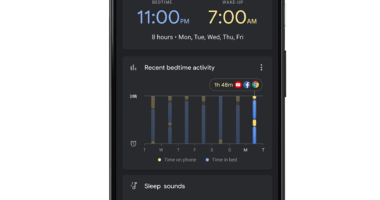
- Set parental controls
Revisit parental controls and privacy settings which are useful tools to help minimise the risks your children may face.
For example, the SafeSearch Filters feature on Google will block sites with explicit sexual material.
But these filters are not 100 per cent effective, they can minimise the risk.
- T-shirt test
Kids may not be aware how public the internet is, and once information it out there, it may not be possible to remove it.
Use the “T-shirt test” if you’re worried about them over sharing online.
Ask your child to remember: “Would you wear it on your T-shirt? Then don’t post it online.”
- Find out what apps they use
Subtly find out what apps your children use by asking them in conversation. Do this regularly, as trending apps change.
Then get familiar with the platforms yourself. This way you can spot any potential ways your child can come into harm through these apps.
You can also make sure they know how to use the app to block someone, report inappropriate posts and use privacy settings.
- Tell them to turn of location
Many apps ask for permission to use your location and if you agree, it can stay on in the background constantly.
For example Snapchat has a feature which allows people to see others on a map. Other apps allow a person to add a location, for example you can tag your whereabouts on an Instagram photo.
- Know your child’s friends
Monitor your children’s posts online to see who interacts with them. If you spot someone out of the ordinary, you can ask your child who they are.
Children can be naïve about who they are chatting with and often this can be done in private messaging, so it’s important to keep an eye and ear out.
- Educate on what’s “fake”
Make sure your child is aware of fake news and how to spot it. It may also be useful to have a conversation about how celebrities and influencers often post images that are photoshopped.
Research has previously warned of the harms youngsters face by constantly viewing unrealistic body shapes.
- Teach critical thinking
It sounds complicated, but Internet Matters advises you to teach your child critical thinking.
This may be explaining to them how internet advertising works, by pushing products online in creative ways.
For example they may not know their favourite influencers are praising a product because they have been paid to do so.
- Set screen time limits
Teens who spend three or more hours a day on social media are doubling their risk of mental health problems, research suggests.
And children fail to get enough nightime if they are glued to their phones, which may impact their peformance in school.
Set screen time limits for your kids even if they are resistant.








